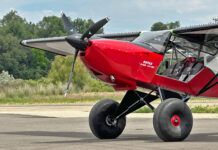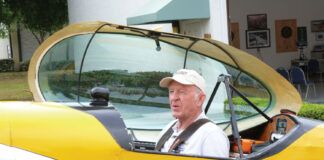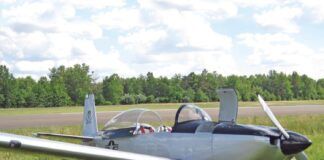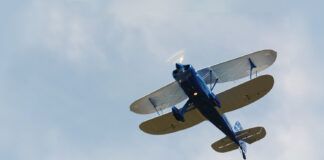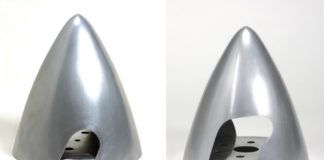As we started to discuss last month, the landing gear is a major component of the airplane that affects the design in significant ways. Delaying the layout and design of the gear until late in the design process will inevitably lead to problems.
Accordingly, the designer should address the major factors associated with landing gear in some detail relatively early in the evolution of the airplane to ensure that the major issues associated with the integration of the landing gear are designed into the configuration. If this is not done, it’s very easy to find oneself with a lovely design perched (in our drawings) on “lollipops” and then discover (for example) that there is no viable load path to carry the landing gear loads into the rest of the airplane, or the main gear wants to retract through the main wing spar into the pilot’s and passenger’s kidneys because there is no available volume into which the retracted gear can fit. Making landing gear design and integration decisions early prevents this type of problem.
Landing Gear Configuration
The first major choice the designer must make is the configuration of the gear. While there are a few exotic layouts in use in special cases, for the vast majority of airplanes the choice is between a tricycle gear and a taildragger layout.
While the majority of light airplanes use tricycle gear, both gear configurations persist for good reason. Each has advantages and drawbacks, so the choice of gear configuration, like other design decisions, should be driven primarily by how the landing gear characteristics serve the performance of the airplane’s mission.
Tricycle Gear
Prior to WW-II, the vast majority of airplanes had taildragger landing gear. As we will see later, this is primarily because taildraggers have significant advantages operating off of unpaved runways. As smooth, paved runways became the norm, the advantages of the tricycle layout caused it to become the standard.
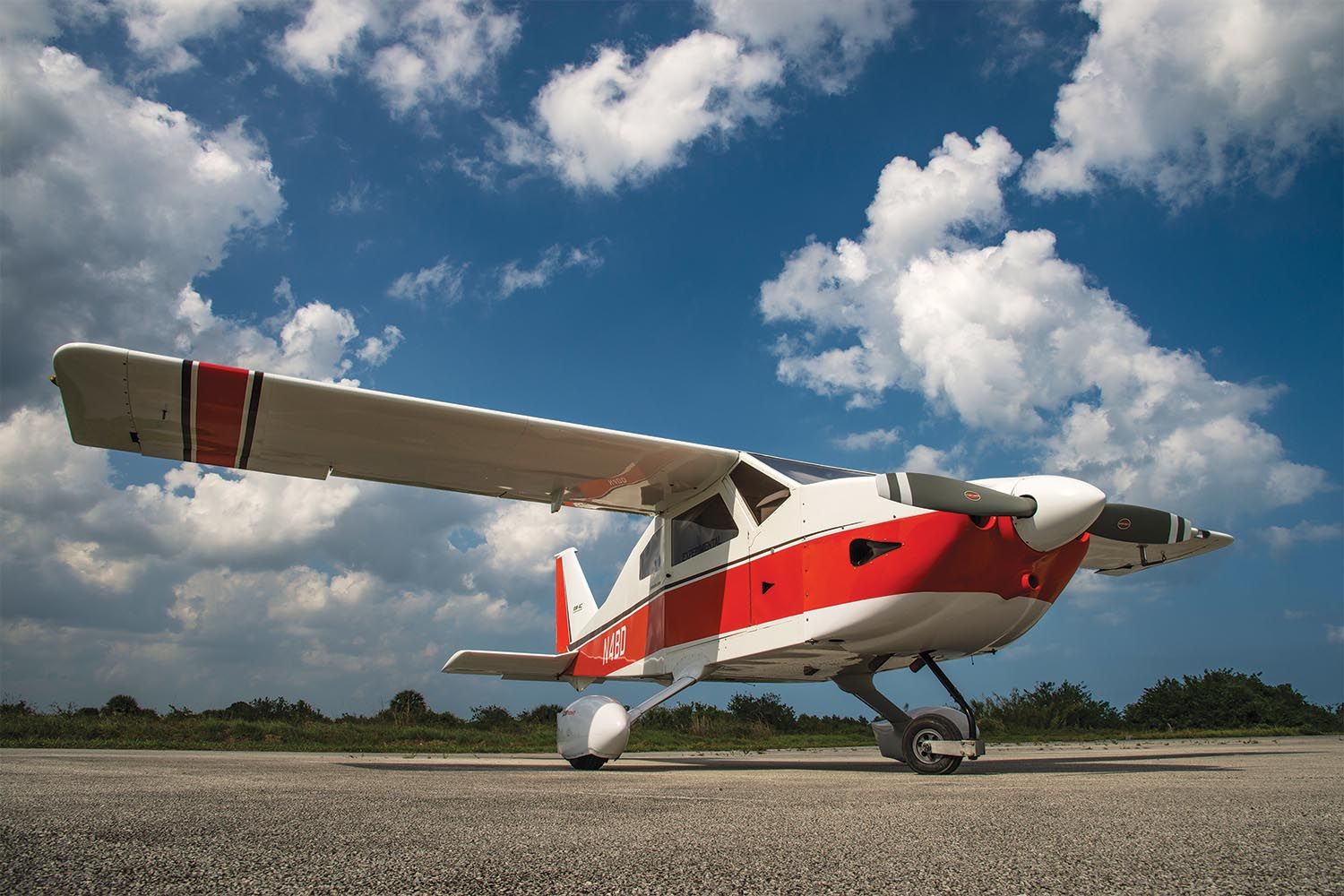
The tricycle layout offers several major advantages. The most important of these is that a trike is directionally stable on the ground. The majority of the weight of the airplane is borne on the main gear, which is located behind the center of gravity. Accordingly, when the airplane is turning, the side force on the main gear acts to resist the turn. Left to itself without steering input or aerodynamic yawing moment, the airplane will tend to roll in a straight line. This characteristic makes the airplane easier to control on the ground during the takeoff and landing roll.
A second advantage of tricycle gear is pilot visibility during ground operations. A trike-geared airplane sits relatively level on the ground, so the pilot can see directly in front of the airplane when it is moving on the ground.
Tricycle gear also offers more ability to choose the attitude of the airplane on touchdown and “plant” the airplane after the wheels are rolling. It is possible to fly a trike-geared airplane in a flatter attitude (and higher airspeed) than the typical just-pre-stall, fully flared condition and then de-rotate it to unload the wing and allow effective braking. This technique is sometimes useful in gusty or crosswind situations where the extra airspeed allows the pilot more control on approach.
Tricycle landing gear also has some disadvantages. Since there are three landing gear legs instead of two, trike gear is heavier than taildragging gear. Although the taildragger usually has a tailwheel, the tailwheel is much smaller and lighter than the nose gear would be for the same airplane.
If the landing gear is fixed, a tricycle landing gear has more drag than taildragging gear because there is an extra gear leg exposed to the airstream, and the nose gear wheel and tire will be much larger (and hence higher drag) than a tailwheel. The drag of a nose landing gear tends to be disproportionately high for two reasons. First, for a single-engine tractor airplane, the nose gear leg is directly behind the propeller so it is completely immersed in the prop slipstream. This means that the nose gear is effectively flying at a higher airspeed than the airplane, and since drag is proportional to airspeed squared, the relatively small increase in the effective airspeed of the nose gear can cause a significant increase in drag.
Fixed nose landing gear is also harder to fair well than main gear legs because the nose wheel must be able to pivot to steer the airplane on the ground. This makes the gear fairings more complicated and also introduces issues of stability for the wheel fairing. Because the nose wheel can pivot to steer, and the wheel fairing must pivot with the wheel, it must be aerodynamically directionally stable so it tends to point into the wind. Many low-drag wheel pant shapes are not directionally stable about the wheel axle point and will tend to yaw and fly sideways if used on a nose wheel.
The final significant disadvantage of tricycle landing gear appears when operating off of rough fields. The level ground attitude of a trike-geared airplane means that the clearance between the propeller and the ground is relatively small. On a bumpy surface, there is more chance of a prop strike because of this.
Rough-field operations are also hard on nose landing gear since it hits the bumps first. An airplane that operates off of smooth surfaces puts relatively small loads on its nose gear. The main landing loads are absorbed by the main gear, and the forces exerted on the nose gear while rolling on a smooth surface are relatively small. On a rough surface the nose gear can experience much larger loads as the airplane negotiates the bumps and depressions in the runway surface.
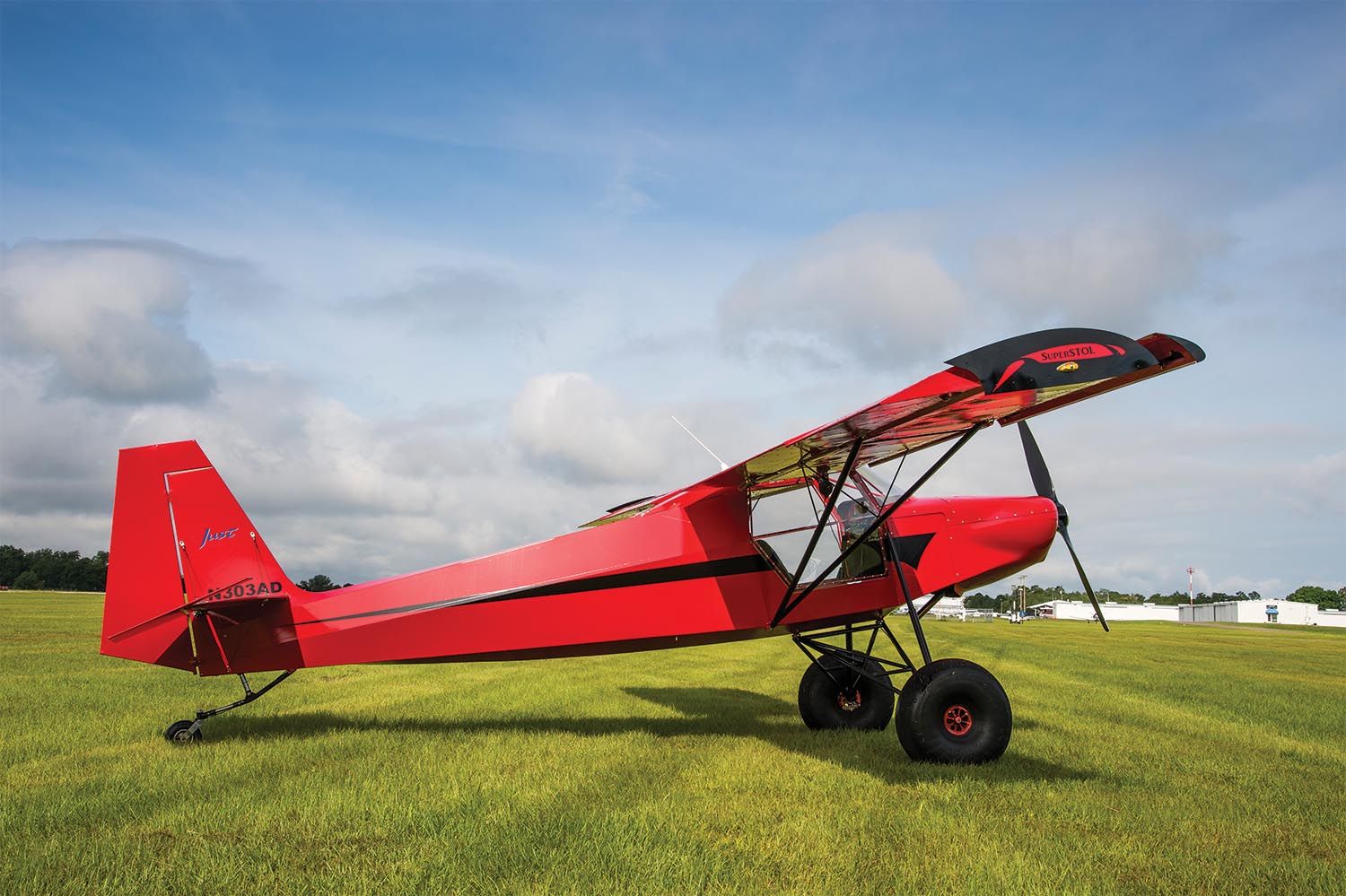
Taildragger Configuration
The taildragger landing gear configuration (once referred to as “conventional” gear) was the primary design used on essentially all airplanes in the period between shortly after the dawn of flight and the end of WW-II. Taildragging gear was not confined to small airplanes and was a feature of transports such as the DC-3 and bombers like the B-17.
Early airplanes operated out of grass or dirt fields rather than paved runways. The taildragger configuration is well suited for such operations because the nose-high attitude of the airplane on the gear, and the proximity of the propeller to the main landing gear, provide good propeller ground clearance and minimize the chance of a prop strike in the event of a bounced landing.
Early airplanes also lacked wheel brakes. Taildragging landing gear that used a tail skid rather than a tailwheel provided a primitive form of braking by dragging the tail skid over the surface of the field. The drag of the tail skid can be increased by using up elevator to press the tail down and decreased with forward stick to unload the skid. The drag of the tail skid also helped keep the airplanes rolling straight after touchdown.
Taildragging gear is also lighter and produces less drag than tricycle landing gear because there are only two substantial gear legs rather than three.
The primary disadvantages of taildragging gear are seen in ground operations. The first is that the nose-up attitude of the airplane on the gear impairs the pilot’s visibility ahead of the airplane when it is taxiing. Pilots compensate by S-turning when taxiing to look out over each side of the nose, but this makes taxiing more difficult and does not completely solve the forward visibility problem, particularly during the initial part of the takeoff roll, before the pilot raises the tail, and also during the latter part of the landing roll, after the tail comes down to the runway surface. Unfortunately, there have been many nasty accidents involving a taxiing taildragger overrunning another airplane with its spinning propeller.
Another significant issue for taildraggers is that they are directionally unstable when rolling on the gear. The main gear contact point is ahead of the CG, so side force on the gear tends to tighten a turn.
Taildraggers are also prone to nose-over incidents if the pilot tries to brake too aggressively or the wheels are dragged on by a high-friction runway surface such as taller grass or soft soil. In order for the airplane to be able to raise the tail during takeoff, the main gear must be relatively close to the CG to keep the load on the tailwheel small. This means that in a level or near-level attitude, it does not take much additional nose-down moment to nose over.
Because of these factors, the level of pilot skill required to safely operate a taildragger and keep it under control on the runway is much greater than that required to operate a trike-geared airplane safely. This is the single largest argument against taildragging landing gear and is the primary reason why, with the advent of smooth runways, tricycle gear became the predominant configuration.
The Choice
The designer must weigh the advantages and drawbacks of the two gear configurations against the requirements for the airplane. For most airplanes, the greater ease of operation of the tricycle gear configuration overrides the cost in weight and drag of the extra landing gear leg.
For some specialist types, where either rough-field prop protection or lower drag and weight of taildragger gear are important, these advantages override the increased pilot skill needed to fly them safely and the greater risk of loss of control on the ground. Racers, aerobatic airplanes, and airplanes intended for backcounty bush operations are examples of types where the taildragger remains the preferred configuration.








